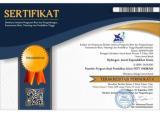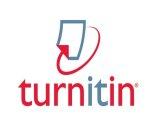Development of Digital Interactive Modules for Teaching Chemical Bonding of Grade XI Senior High School Students
DOI:
https://doi.org/10.33394/hjkk.v13i4.16805Keywords:
chemical bounding, electronic module, interactiveAbstract
This study aims to determine the feasibility of an interactive electronic module on chemical bonding for 11th-grade high school students, as well as to describe student responses to its use. The study is a type of Research and Development (R&D) using the 4D development model (Define, Design, Develop, and Disseminate), though it is limited to the Develop stage. Data collection instruments included feasibility assessment sheets and student response questionnaires. The module’s feasibility was assessed by three experts based on language, content, and media aspects. The results showed an average feasibility percentage of 95.51%, categorized as highly feasible. The response test was conducted on a limited basis with 30 students from grade XI at SMA N 1 Sungai Raya, yielding an average response percentage of 87.25%, categorized as very good. Based on these results, the interactive electronic module was deemed feasible and received positive responses from students, making it a potential alternative for engaging and interactive learning in chemical bonding.
References
Alwanuddin, A., Hairida, H., Ulfah, M., Enawaty, E., & Rasmawan, R. (2022). Pengembangan Modul Elektronik Berbasis SAVI pada Materi Bentuk Molekul. Eduktif: Jurnal Ilmu Pendidikan, 4(3), 485-4873. https://doi.org/10.33578/kpd.vlil.24
Arikunto, S. (2010). Prosedur Penelitian: Suatu Pendekatan Praktik (Edisi revisi). Jakarta: Rineka Cipta.
Asda, V., D., & Andromeda. (2021). Efektivitas Modul elektronik interaktif Berbasis Guided Inquiry Learning Terintegrasi Virlabs dan Multirepresentasi pada Materi Larutan Elektrolit dan Non Elektrolit terhadap Hasil Belajar Siswa. Jurnal Ilmu Pendidikan. Vol. 3 No. 3 Hal. 710 – 716. Padang: Universitas Negeri Padang.
Atmaja, A.T., Murtadho, N., & Akbar, S. 2021. Pengembangan e-modul berbasis kearifan lokal dan kecakapan hidup. Jurnal Pendidikan: Teori, Penelitian, Dan Pengembangan, 6(11):1673-1678. https://doi.org/10.17977/jptpp.v6i11.15104.
Badan Nasional Sertifikasi Profesi. (2017). Pedoman Pengembangan Skema Sertifikasi Kompetensi. Jakarta:BNSP.
Dennys, G., & Sunaryo, T. (2018). Perbandingan Capaian Pembelajaran Model Cooperative Learning dan Model Pembelajaran Ceramah Di SMK Pangudi Luhur Rahayu Ii Cijantung. Jurnal Manajemen Pendidikan, 7 (69), 5-24. https://ejournal.uki.ac.id/index.php/jmp/articel/view/2970
Ferdianto, F., & Setiyani, S. (2018). Pengembangan Bahan Ajar Media Pembelajaran Berbasis Kearifan Lokal Mahasiswa Pendidikan Matematika. JNPM (Jurnal Nasional Pendidikan Matematika), 2(1), 37. https://doi.org/10.33603/jnpm.v2il.781
Hasanah, I., Melati, H. A., & Rasmawan, R. (2021). Pengembangan Modul Kimia Pendekatan Saintifik pada Materi Laju Reaksi di Madrasah Aliyah (MA). Edukatif : Jurnal Ilmu Pendidikan, 3(6), 4160–4171. https://doi.org/10.31004/edukatif.v3i6.746
Hilwannisa, H., Enawaty, E., & Mayasari, E. (2025). The Effectiveness of a Local Wisdom-Based Science E-Module on Studients’ Learning Outcomes in Additive Substances. Hydrogen: Jurnal Pendidikan Kimia, 13(2), 395-404.
https://doi.org/10.31004/edukatif.v3i6.746
Kementerian Pendidikan, Kebudayaan, Riset, dan Teknologi. (2022). Capaian Pembelajaran SMA/MA Mata Pelajaran Kimia Fase E dan F. Direktorat SMA, Kemdikbudristek.
Kristanto, A. (2008). Perancangan Sistem Informasi dan Aplikasinya. Yogyakarta: Gava Media.
Pawestri, N. A., & Erlina, Harun, A. I., & Sahputra, R., & Lestari, I. (2023). Development of E-module based on guided inquiry in chemmical bonding topic for class X student learning materials. Jurnal Pendidikan Sains Indonesia (Indonesian Journal of Science Education),11(4), 713-739 https://doi.org/10.24815/jpsi.v11i4.30677
Pemerintah Republik Indonesia. (2021). Peraturan Pemerintah Republik Indonesia Nomor 57 Tahun 2021 tentang Standar Nasional Pendidikan. Jakarta: Kementerian Pendidikan dan Kebudayaan.
Pranata, D. P., Frima, A., & Egok, A. S. (2021). Pengembangan LKS Matematika Berbasis Problem Based Learning pada Materi Bangun Datar Sekolah Dasar. Jurnal Basicedu, 5(4), 2284–2301.
Putra, K. W. B., Wirawan, I. M. A., & Pradnyana, G. A. (2017). Pengembangan E-Modul Berbasis Model Pembelajaran Discovery Learning Pada Mata Pelajaran “Sistem Komputer†Untuk Siswa Kelas X Multimedia Smk Negeri 3 Singaraja. Jurnal Pendidikan Teknologi Dan Kejuruan, 14(1), 40–49. https://doi.org/10.23887/jptk.v14i1.9880
Raharjo, M. W. C., Suryati, & Khery, Y. (2017). Pengembangan e-modul interaktif menggunakan Adobe Flash pada materi ikatan kimia untuk mendorong literasi sains siswa. Jurnal Ilmiah Pendidikan Kimia “Hydrogenâ€, 5(1), 8–13.
Rasmawan, R., & Erlina, E. (2021) Pengembangan Aplikasi E-Book Elektrokimia Berbasis Android Untuk menumbuhkan Self-Directed Learning Mahasiswa. Jurnal Pendidikan Sains Indonesia, 9(3), 346Ë—362. https://doi.org/10.24815/jpsi.v9i3.20072
Ratminingsih, N. M., Budasi, I. G. & Kurnia, W. D. A. (2020). Local Culture-based Storybook and Its Effecton on Reading Competence. International Journal of Instruction.Vol.13,No.2.Hal. 253-268. https://doi.org/10.29333/iji.2020.13218a
Riduwan. (2012). Skala Pengukuran Variabel-Variabel Penelitian. Jakarta: Alfabeta.
Safitri, A., F., Widarti, H., R., & Sukarningsih, D. (2018). Identifikasi Pemahaman Konsep Ikatan Kimia. Jurnal Pembelajaran Kimia. Vol 3, No. 1. Malang: Universitas Negeri Malang.
Yeni, T., Enawaty, E., Sahputra, R., Muharini, R., & Sartika, R. P. (2021). Pengembangan LKPD berbasis PBL dengan Liveworksheet pada pokok bahasan Termokimia di SMA/MA Pontianak. Pros. Sem. Nas. KPK., 4.
Zakaria, A., Enawaty, E., Lestari, I., Muharini, R., & Erlina, E. (2024). Development of an Interactive Multimedia Based E-Modul on Geometric Isomer Material. Hydrogen: Jurnal Pendidikan Kimia, 12(2) 384-401. https://doi.org/10.33394/hjkk.vl2i211171
Published
How to Cite
Issue
Section
Citation Check
License
License and Publishing Agreement
In submitting the manuscript to the journal, the authors certify that:
- They are authorized by their co-authors to enter into these arrangements.
- The work described has not been formally published before, except in the form of an abstract or as part of a published lecture, review, thesis, or overlay journal.
- That it is not under consideration for publication elsewhere,
- That its publication has been approved by all the author(s) and by the responsible authorities – tacitly or explicitly – of the institutes where the work has been carried out.
- They secure the right to reproduce any material that has already been published or copyrighted elsewhere.
- They agree to the following license and publishing agreement.
Copyright
Authors who publish with Hydrogen: Jurnal Kependidikan Kimia agree to the following terms:
- Authors retain copyright and grant the journal right of first publication with the work simultaneously licensed under a Creative Commons Attribution License (CC BY-SA 4.0) that allows others to share the work with an acknowledgment of the work's authorship and initial publication in this journal.Â
- Authors are able to enter into separate, additional contractual arrangements for the non-exclusive distribution of the journal's published version of the work (e.g., post it to an institutional repository or publish it in a book), with an acknowledgment of its initial publication in this journal.
- Authors are permitted and encouraged to post their work online (e.g., in institutional repositories or on their website) prior to and during the submission process, as it can lead to productive exchanges, as well as earlier and greater citation of published work.
Licensing for Data Publication
Hydrogen: Jurnal Kependidikan Kimia uses a variety of waivers and licenses, that are specifically designed for and appropriate for the treatment of data: Open Data Commons Attribution License, http://www.opendatacommons.org/licenses/by/1.0/ (default) Other data publishing licenses may be allowed as exceptions (subject to approval by the editor on a case-by-case basis) and should be justified with a written statement from the author, which will be published with the article.






